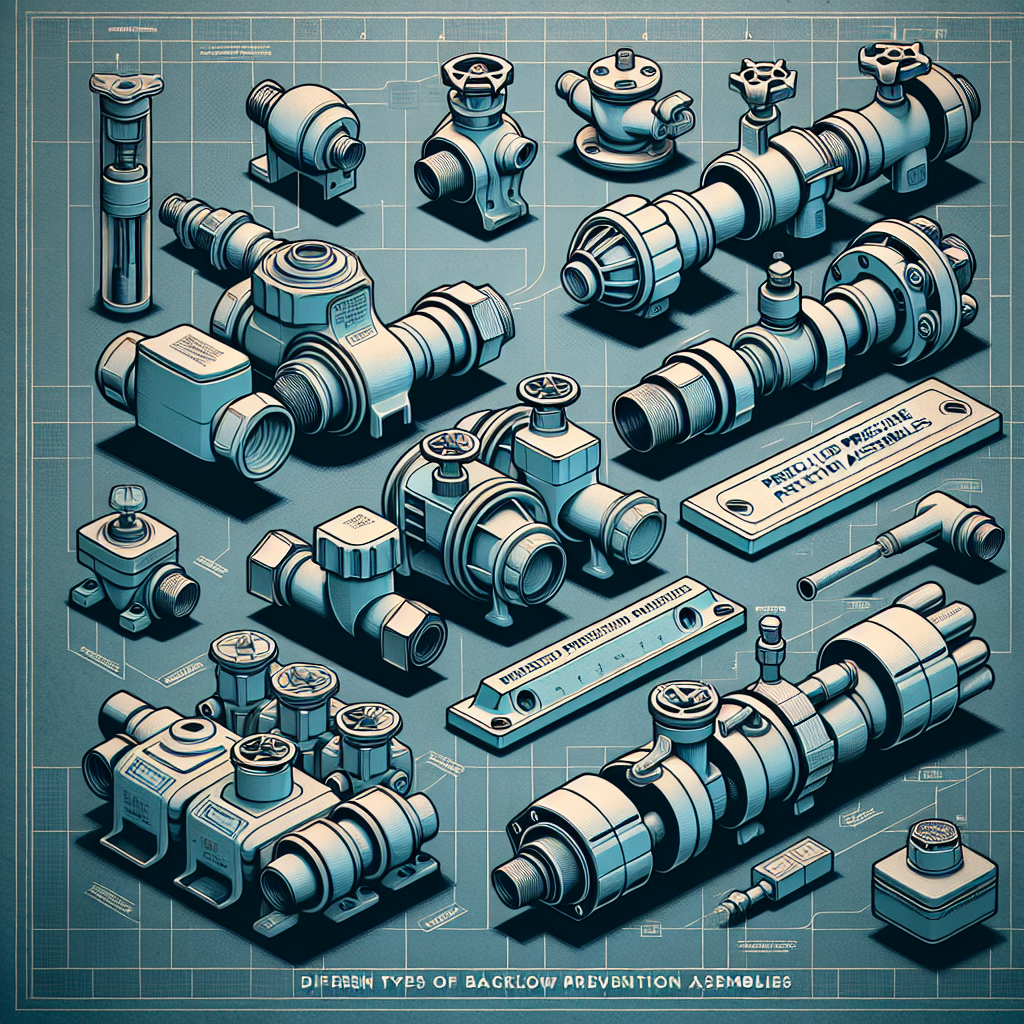Backflow prevention is a crucial aspect of plumbing and water quality management. It ensures that potable (drinking) water does not get contaminated by non-potable sources, such as wastewater or chemicals. With this critical task, different types of backflow prevention assemblies serve various needs depending on the specific risk of contamination. In this article, we’ll explore the common types of backflow prevention devices, their uses, and what you need to know to keep your water safe.
What is Backflow Prevention?
Before diving into the types of assemblies, let’s clarify what backflow prevention means. Backflow occurs when water reverses flow in a plumbing system, potentially bringing harmful contaminants into the clean water supply. Backflow prevention devices are engineered to prevent this reversal, ensuring the integrity and safety of drinking water.
The Importance of Backflow Prevention
Understanding the importance of backflow prevention is essential. Contaminated water can pose serious health risks, leading to waterborne diseases and environmental hazards. Municipalities and water providers enforce regulations that require the installation of backflow prevention assemblies in various applications, ranging from residential homes to industrial facilities.
Types of Backflow Prevention Assemblies
1. Air Gap
An air gap is the simplest form of backflow prevention. It involves a physical vertical distance between the water supply and the receiving vessel, preventing contaminated water from flowing back into the mains. For example, a sink’s faucet should not be submerged in the bowl to avoid backflow. A minimum air gap of one inch or twice the diameter of the outlet pipe (whichever is greater) is commonly required.
Use Case: Air gaps are commonly used in residential settings, such as kitchen sinks, where dishwashers discharge water.
2. Double Check Valve Assembly (DCVA)
A Double Check Valve Assembly consists of two check valves installed in series, allowing water to flow in one direction while preventing reverse flow. Though reliable, it does require periodic testing to ensure functionality. The assembly often includes test cocks for maintenance and inspection.
Use Case: Suitable for commercial applications with a low to moderate risk of contamination. This assembly is often used in irrigation systems and fire protection systems.
3. Reduced Pressure Zone Assembly (RPZ)
The Reduced Pressure Zone Assembly is one of the most effective backflow prevention assemblies. It consists of two check valves separated by a pressure-regulated chamber, which helps lower the water pressure in the system and prevents backflow even during changes in pressure.
Use Case: Ideal for high-risk applications, such as industrial settings and sites where chemicals are used (like laboratories), ensuring maximum protection against backflow.
4. Pressure Vacuum Breaker (PVB)
Pressure Vacuum Breakers prevent back siphonage and are most effective when installed above the highest point of the system. They feature a valve and an atmospheric vent that opens to release built-up vacuum pressure, preventing the backflow of contaminated water.
Use Case: Often used in irrigation systems and residential water features like fountains or pools, where back siphonage is a concern.
5. Hose Bibb Vacuum Breaker
Hose Bibb Vacuum Breakers are designed for individual hose bibs (the outdoor faucets connected to hoses). They are fitted onto the spigot, preventing backflow when water is released from the hose.
Use Case: These are widely used in residential gardens where fertilizers or pesticides are applied with a hose to ensure contaminants do not enter the potable water supply.
Choosing the Right Backflow Prevention Assembly
Choosing the right backflow prevention assembly depends on a variety of factors, including:
- Application Type: Residential, commercial, or industrial.
- Risk Level: High, medium, or low risk of contamination.
- Local Regulations: It’s vital to comply with municipal codes and requirements.
Consulting with a knowledgeable plumber or backflow prevention specialist can help you make the best decision for your specific needs.
Maintenance and Testing of Backflow Prevention Devices
Regular maintenance and testing of backflow prevention assemblies are essential to ensure they operate effectively. Most local regulations require annual testing, performed by a certified professional. Maintenance may also involve cleaning or replacing components, such as check valves, to prolong the lifespan of the assembly.
Conclusion
Understanding different types of backflow prevention assemblies is essential for anyone responsible for water quality and safety. Whether you are a homeowner, business owner, or facility manager, investing in the right system protects not only your water supply but also the health of your family or customers. Always consider local regulations and consult with plumbing professionals to ensure that your backflow prevention measures are up to standard.
By prioritizing backflow prevention, you contribute to a safer and healthier water supply for your community—because clean water is something everyone deserves.


